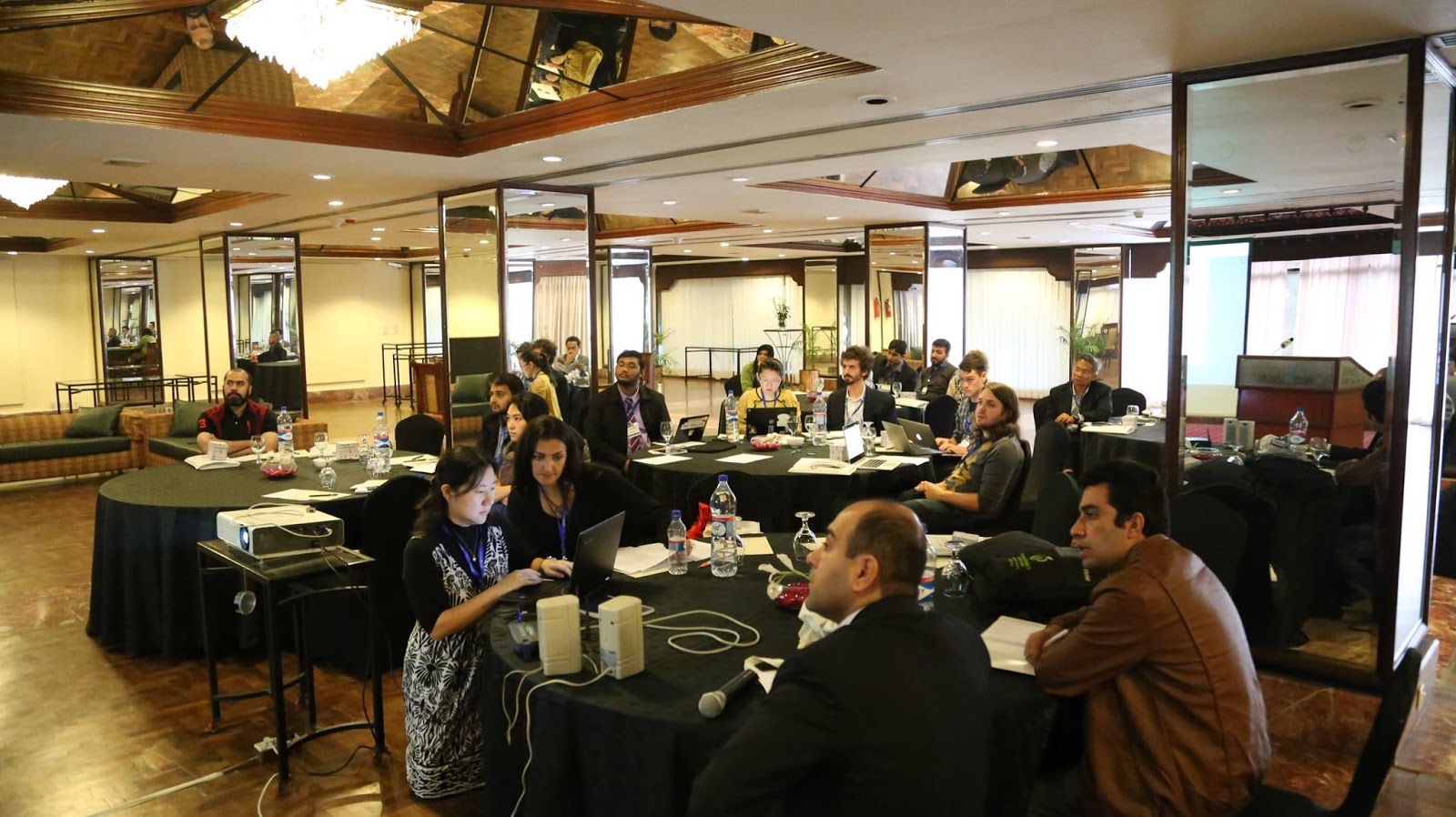A workshop on Community Wireless: Models, Content and Infrastructure was organised by NET4D members at ICTD17 in Lahore, Pakistan.
A full day workshop was held on 16 November with 7 presentations from 6 countries: Pakistan, India, Philippines, Thailand, USA and South Africa.
Community wireless networks are locally owned and operated networks, usually relying on alternative low-cost technologies. They are being increasingly deployed to provide connectivity to remote rural areas or reduce the cost of communications in areas covered by commercial operators. Our objective was to gather people involved in regional CNs to share experiences specific to their projects. Focus was on several aspects of CNs: infrastructure, content and service provision, sustainable business models, and policy.
Organisations present at the workshop were:
Internet Policy Observatory Pakistan (http://ipop.org.pk)
W4C/ Comsats Internet services (http://wforc.pk/, http://www.comsats.net.pk/)
Gram Marg/ IIT Mumbai (http://grammarg.in/, http://www.iitb.ac.in) - remote presentation
TakNet Thailand (https://interlab.ait.ac.th/cwmn/)
VBTS Philippines (https://pcariofficial.blogspot.com/)
OpenCellular (http://telecominfraproject.com/project/access-projects/opencellular-wireless-access-platform-design/)
and iNethi (http://net4d.cs.uct.ac.za/projects).
- Arzak Khan from the Internet Policy Observatory Pakistan presented their project on bridging the digital divide. Poverty, illiteracy, lack of computer literacy, and language barriers are among the factors impeding access to ICT infrastructure, especially in Pakistan.
The majority of low income households in Pakistan are on the wrong side of the digital and knowledge divide; the capacity of these households to engage in the knowledge society is grossly under-developed and under-utilized. Low income households are at risk of becoming increasingly marginalized in the knowledge society, where much more than access to and use of information technology is at stake.
In the knowledge society they need access not only to new technologies but also the ability to participate fully in knowledge-based activities. Given the barriers, challenges and roles that determine their ability to participate on an equal basis with the digital divide in knowledge societies cannot be expected to improve automatically with economic growth. Rather, specific actions and interventions are needed which Internet Policy Observatory Pakistan (iPOP) in partnership with international and national organizations is trying to address by providing computers, communication equipment, software, trainings and diverse solutions to bridge the digital divide in Pakistan under its flagship Close the Digital Gap initiative.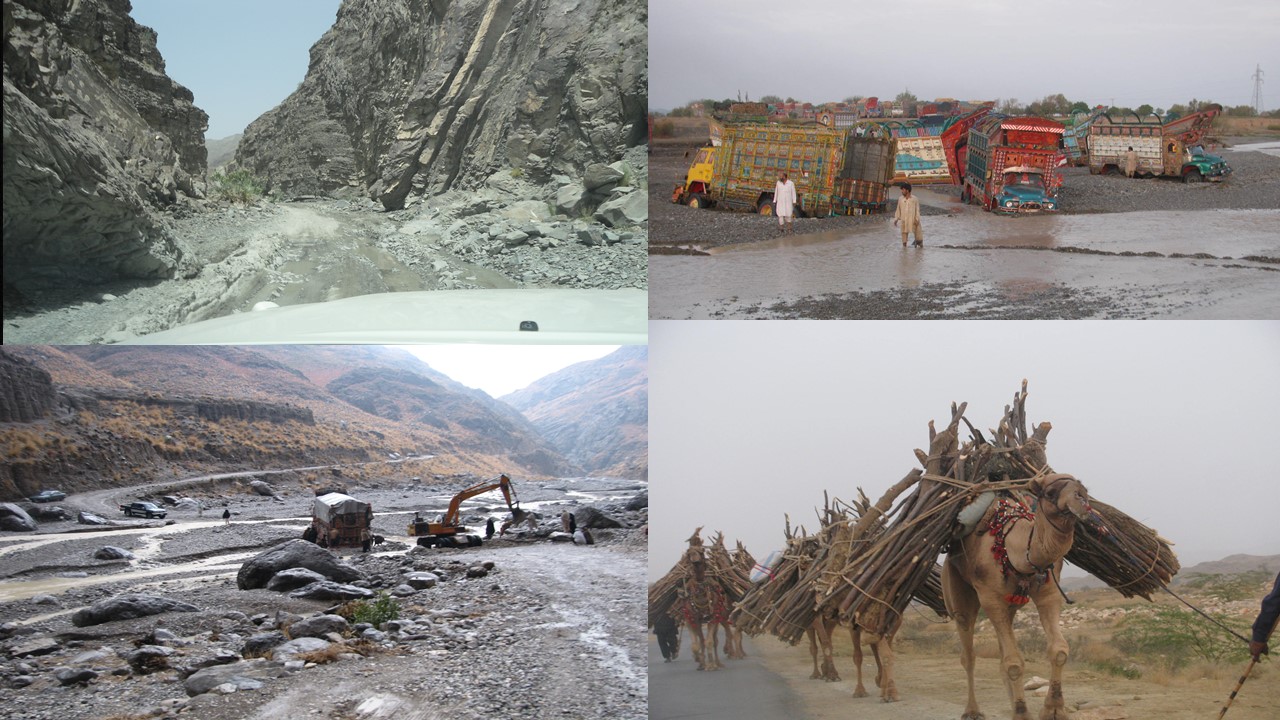
Remote areas in Balochistan
26 Internet Gidans have been established across remote and rural areas of Balochistan. Major challenges are the lack of government and international support, lack of resources for setting up more Internet Gidans, unavailability of basic infrastructure (e.g., power) and financial sustainability.
Internet Gidan
- Imran Tanveer presented the Wireless for Communities (W4C) initiative launched by the Internet Society (ISOC) in October 2010. The project involves deploying line-of-sight wireless technology and low-cost Wi-Fi equipment which utilizes the unlicensed 2.4 GHz and 5.8 GHZ spectrum bands to create community-owned and operated wireless networks. To further localize the initiative, the project was used to strengthen grassroots expertise by training community members in wireless technology, enabling those in the field not only to run and manage these networks but to transfer knowledge to others in the community. The project has won two international awards from Public Affairs Asia and ITU/MCMC. The W4C programme has expanded tremendously over the last couple of years, with project sites deployed in Nepal and Pakistan as well. In Pakistan, the project was co-launched in 2015 by COMSATS Internet Services (CIS) and ISOC to establish a pilot site in Chak Faiz, a rural community near Multan, Pakistan. The project provided connectivity to this rural community as well 2 schools and a polytechnic institute in the area. Currently, the project has undertaken an initiative to provide supplement education to grade 6 students in a government girls school.
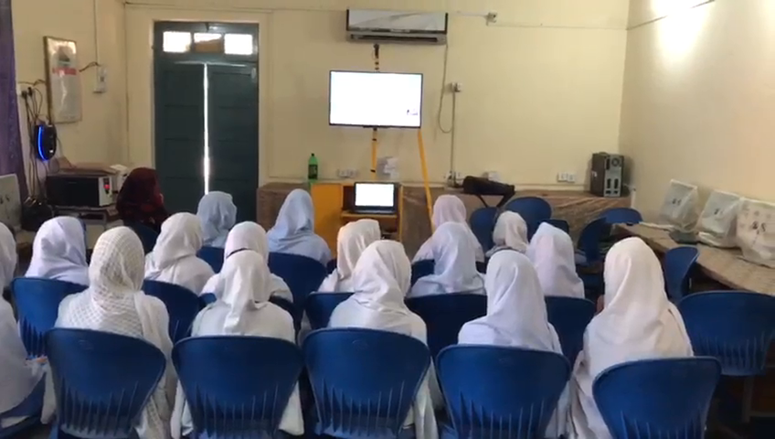
Supplement education
In this next phase connectivity will be provided to a school in Gokina, a remote area near Islamabad.
- Sarbani Banerjee Belur from Gram Marg India gave a remote presentation on their project that won the Mozilla Equal Rating Challenge in 2017. Gram Marg Rural Broadband project at IIT Bombay, India has been working on a cost-effective technology solution and a sustainable economic mode through field trials and test bed deployment. Even if connectivity reaches rural India, without a sustainable economic model, the network would not be able to sustain itself at the village level. Impact studies have revealed the need for community owned networks. Villagers understand that they saved time and money when Internet reached them. However, this Internet could not be sustained. They suggested a community owned network that will enable them to ‘own the Internet’. Based on this, a 4P model was developed (Public-Private- Panchayat Partnership). Panchayat being the local self government at the village level, takes ownership of the network.
This partnership enables the network to be community owned for effective decision making and prioritising services based on village needs. The public-private partnership enables Internet connectivity to reach the village from where it is taken over by the Panchayat. The investment for the network is done by Panchayat at the village level. Local youth known as Village Level Entrepreneurs (VLEs) invests, maintains the network and generates revenue. The model ensures a decent and sustainable return of investment (ROI) for the Panchayat and nominal user subscription cost. It also takes into account expected futuristic growth in demand and related cost dynamics. Revenue generation and sharing is an important aspect which provides incentive for Internet’s spread and expansion in the village.
Two pilot test-beds were presented: Test-bed 1 using TV UHF bands and covering 7 villages in an area of 25 m2, and Test-bed 2 using additional 5.8 GHz WiFi links as backhaul connecting 25 villages over 350 m2.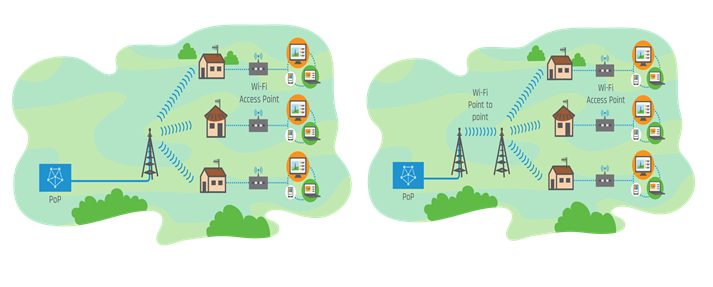
Test-beds 1 and 2 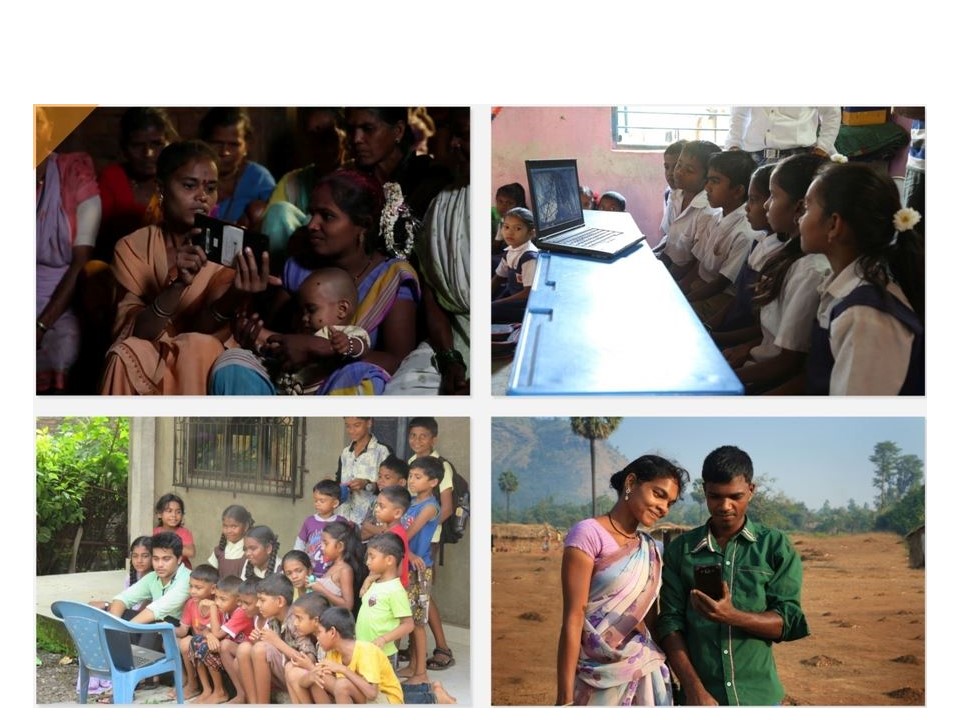
Internet access via WiFi hotspots - Suraporn Koetsawang Paul gave a talk on Net2Home - the case of wireless community network in Thailand. Net2Home is a wireless community service on mesh technology, emphasizing on low cost, low maintenance, and intensive community empowerment. It is a Community Wireless Mesh Network (CWMN) initiated by the Internet Education and Research Lab at the Asian Institute of Technology (AIT) and the THNIC Foundation using technology adapted from DUMBONET (http://dumbo-technology.interlab.ait.asia/). Net2Home played a catalyst role of bridging digital divide by increasing users' economy of scale to meet commercial interest.
Their approach is providing total solution in the early stage of CMN and gradually transfers the tasks to the communities as they gain more confidence. As of today, villagers experience much digital life improvement, particularly the education and information sharing. Net2Home aims to expand countrywide as there will always be digital gap left where ISP’s service is not commercially feasible. For 5USD/month for a subscription, there are 200+ active users in Thai Samakhee, a small rural village in northern Thailand.
Current and future CWMNs across Thailand

- Philip Martinez from the University of the Philippines presented the current status of the Village Base Station Project (VBTS) in the Philippines. Many villages (‘barangays’) still lack cellular connectivity, especially in remote, rural areas. In addition, many barangays lack grid power.
VBTS aims to pilot Community Cellular networks (CCNs) in unserved, remote, and rural communities in the Philippines. The team studies the feasibility of deploying Village Base Stations in the Philippines, geared towards sustainability. There is a social science research component doing an impact evaluation study of communities with first-time access to cellular communications. Also, VBTS is working with social scientists to lay out strategies for stakeholder engagement. Strategies include frequent visits, trainings, seminars and the end-goal is for the stakeholders to have a sense of ‘communal ownership and management’ of the cell site, thus empowering them to make network-related decisions.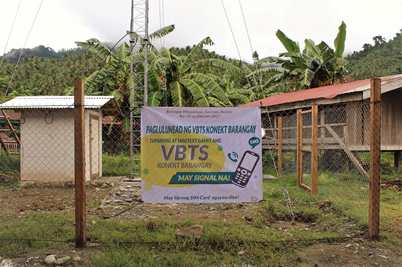
One of the VBTS pilot sites
Philip shared the challenges that the project has encountered, as well as initial learnings. Major challenges are related to spectrum and hardware regulations and backhaul OPEX. In the long run, a liaison between the small cooperatives and the big telco might be required. These challenges and learnings may serve as a policy guide towards building sustainable CCNs in the Philippines. Two out of the 7 planned pilot sites were already launched, starting September 2017; all 7 sites are targeted to be operational by 2018. - Kurtis Heimerl presented OpenCellular, an open source wireless access platform. The platform is designed to improve connectivity since it can be deployed to support a range of communication options, from a network in a box to an access point supporting everything from 2G to LTE. In many cellular network deployments, the cost of the civil and supporting infrastructure (land, tower, security, power, and backhaul) is often much greater than the cost of the cellular access point itself. One of OpenCellular goals is to make architectural and design improvements that would result in lower costs associated with the civil and supporting infrastructure.
The hardware was designed with simplicity in mind, to encourage people to deploy their own cellular networks. Many people might not realize that running their own cellular networks is not only possible but also doesn’t require substantial technical expertise. Local manufacturing significantly decreases equipment cost, and encourages knowledge transfer, an open-ecosystem, and sustainable development.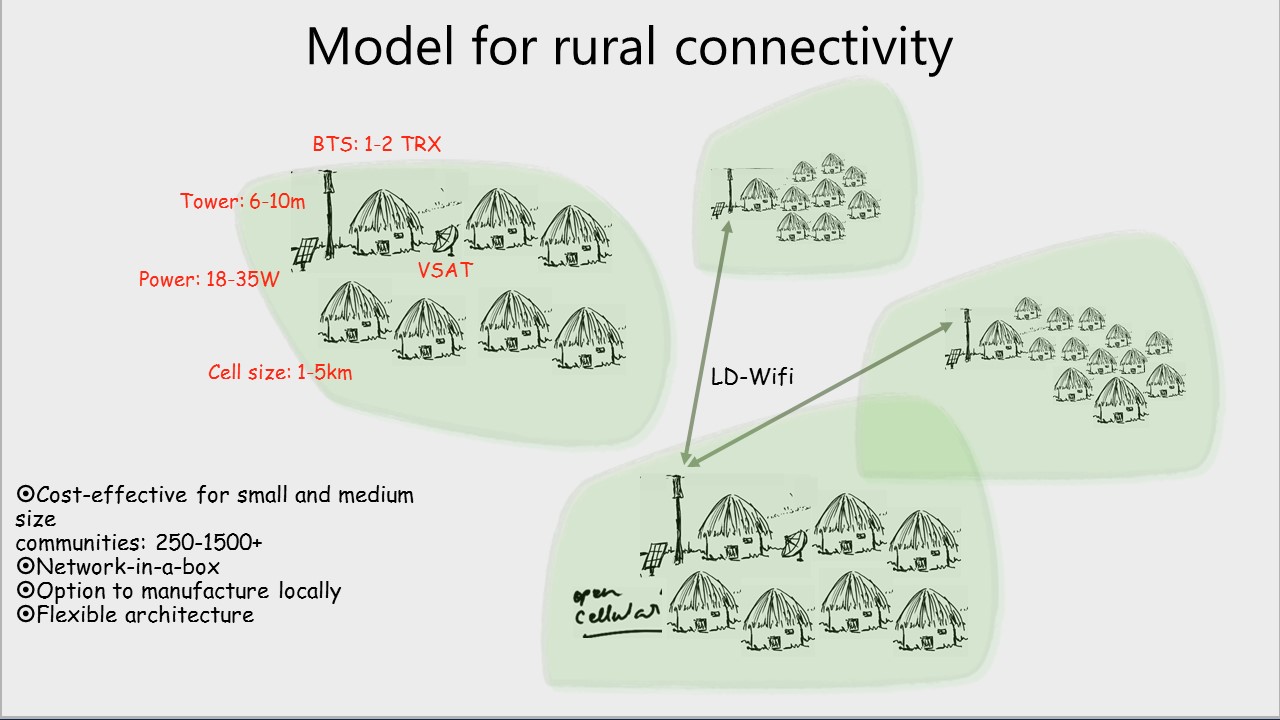
Model for rural connectivity 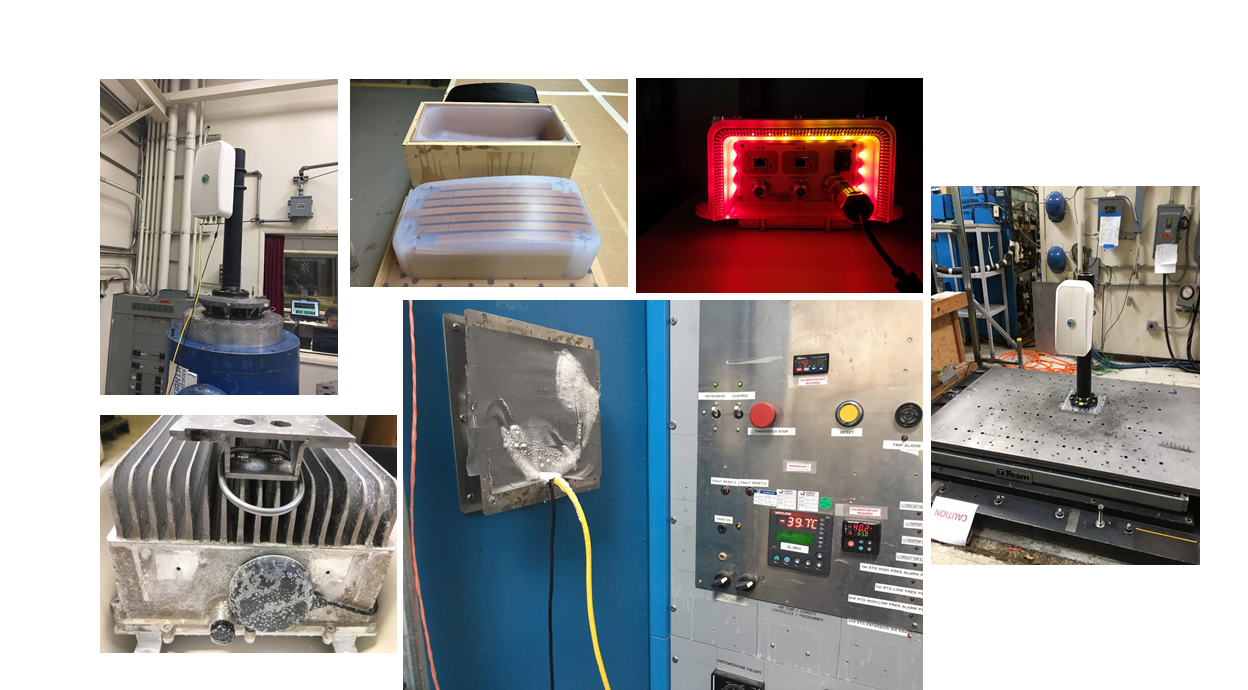
OpenCellular - Melissa Densmore presented iNethi - a project addressing the lack of affordable Internet access in South Africa’s informal settlements. High cost of cellular network data packages and practical non existence of alternative low cost connectivity (e.g., public WiFi) make Internet access a luxury for certain communities.
iNethi network uses mesh with TVWS and WiFi radios for backhaul, and iNethi cloudlets for decentralized content distribution. iNethi will be a co-op / community owned network and the cloudlet platform will support new services designed for and by the community. It is designed to smartly synchronize user data between multiple edge iNethi cloudlets and a global iNethi cloudlet.It is an open platform that provides a set of APIs to integrate single sign-on, smart synchronization, and security to allow community developers to modify existing cloud services for iNethi or conceive entirely new cloudlet services. iNethi can integrate into any community network or intranet and not simply run as a standalone WiFi hotspot - although this is also possible.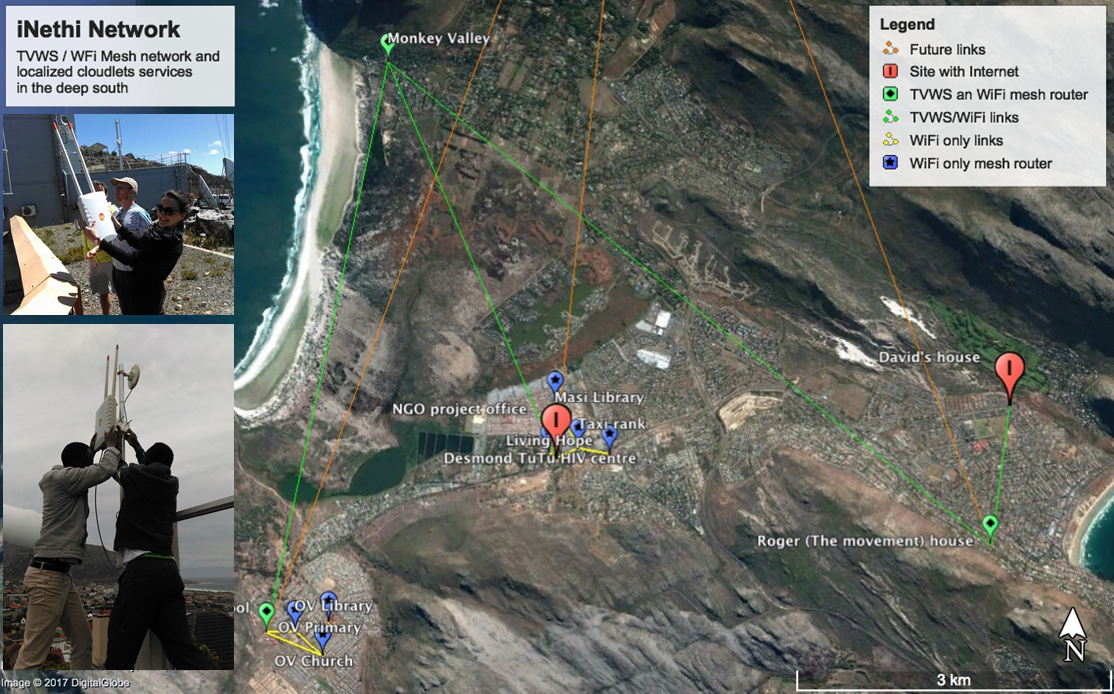
Pictures from the workshop
